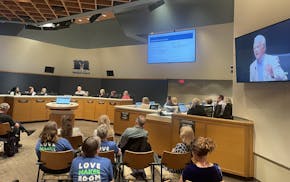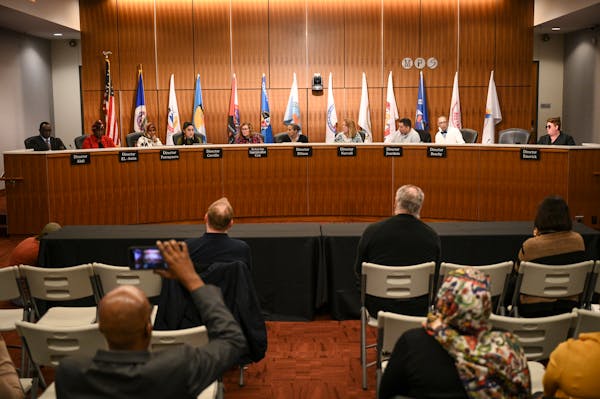A posting for superintendent of Minneapolis Public Schools will soon go up on education job sites around the country.
When it does, there will be no tougher job on offer in Minnesota.
The MPS school board is trying to cope with the pending disappearance of a huge revenue source while trying to find a new leader who can take the heat when big cuts will likely have to be made.
With the ending of pandemic-related federal aid, the district's chief financial officer warned last November that MPS will plunge into insolvency next year.
That may force the district to seek a bailout from the Legislature, something that could happen just when voters are starting to think about the 2024 election. The district's importance for the reputation of the city and state would be thrust into the spotlight.
On Tuesday evening, the board approved a budget relying on federal emergency grants for more than $90 million — or 12% of its $753 million in operating revenue — for the 2024 fiscal year starting July 1.
Legislators this spring distributed more money to school districts, but for MPS this upcoming year that amounts to around $35 million. It will need considerably more when the federal aid dries up in the 2025 fiscal year.
More likely, the district will need to make tens of millions of dollars in expense cuts. That could involve closing schools and laying off people.
The district's enrollment has been declining for years, in part because it has lost students to suburban districts and charter schools. But the report by the district's finance office last November made something else quite clear: MPS isn't just losing market share, it's losing market.
Since the 2017-18 school year, district enrollment has dropped by about 6,000 students to around 27,000. But only about 1,200 of those students wound up in other schools. The rest don't exist.
"Looking at share alone masks another important factor that has contributed to enrollment declines: the number of [school-age] children living in the city of Minneapolis has been declining steadily," the report said.
Because birth-rate data gives district officials' insight into how many kids will be coming into schools, they already project that enrollment will drop to around 23,000 by the fall of 2027.
And with enough school buildings to teach about 40,000 students, one likely tactic will be to close some of them. That's sure to result in heated meetings and hard feelings among district leaders, teachers, parents and students.
Separately Tuesday, board members met for the second time in a week with consultants from BWP & Associates, a Chicago-based firm that will manage the superintendent search.
Last week, the BWP consultants told the board they would begin advertising the post in September and aim to present a slate of candidates for board interviews by Thanksgiving.
While that happens, the district's interim superintendent, Rochelle Cox, and board members — with five of the nine just elected last fall — will work on the 2024-25 budget challenge.
"We're going to start having those conversations before a new superintendent comes on board," Adriana Cerrillo, who was elected to the board in 2020, told me this week.
She said the board's strategic plan, which is focused on addressing the learning loss that resulted from the pandemic and improving academic achievement in the district, will help guide some of the difficult choices that lie ahead.
Cerrillo said she's worried the superintendent search process so far hasn't produced enough community input. In the interaction with BWP consultants on June 6, board members emphasized that the final two or three candidates would need to be introduced publicly.
"We really need to work on our transparency and community engagement," Lori Norvell, who was elected to the board last fall, told the consultants at last week's meeting.
In recent months, I've had several government officials tell me they don't like it when I draw comparisons between what they do and what business leaders do. I don't expect institutions like MPS to produce a gross profit margin; no serious person would.
But when faced with fiscal difficulties, parallels to a struggling business seem appropriate. And what's happening now at MPS looks similar to when business executives realize they failed to evolve with their customers.
While MPS seems like it is always making changes, it last closed three schools under competitive pressure in 2010. What's coming up in the next year for the district may be tougher than anything since its big downsizing in the early 1980s.
That's when the baby boomers finished high school and the generation behind it was about 10% smaller. The district's enrollment plunged from 65,000 in the early 1970s to around 40,000 in 1982. One-third of the city's schools closed, including Central, West and Vocational high schools.
People still talk about that painful moment.

Ramstad: Minnetonka council meeting shows compromise on affordable housing is possible

Ramstad: In a tight labor market, job fairs have changed to find people on the margins



